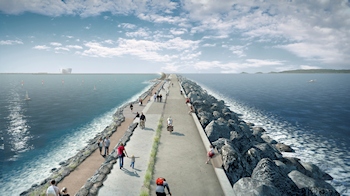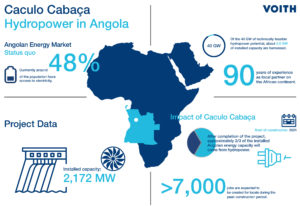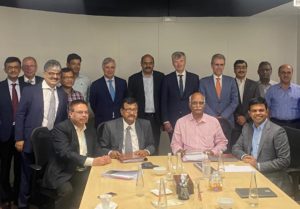Equipment for the World’s First Tidal Lagoon Hydropower Project
Following an international bidding process, Tidal Lagoon Swansea Bay plc. has appointed the consortium by GE/Andritz Hydro as preferred bidder for supply of the electromechanical equipment for the world’s first tidal lagoon hydropower project in Swansea Bay, Wales.

The tidal lagoon hydropower plant in Swansea Bay, Wales, will have a total capacity of 320 megawatts. (Image: Andritz AG)
The advance works agreement has now been signed. The bidding volume for the consortium is in the region of 400 million euros. The Andritz Hydro share amounts to approximately 250 million euros (with a substantial creation of value in the UK). The main order for supply of the electromechanical equipment is scheduled to enter into force in the later course of 2015 upon fulfilment of all requirements and procedures. Start of commercial operation is scheduled for 2019.
The tidal lagoon hydropower plant will be located in the Severn Estuary and will have an installed capacity of 16 units with over 20 megawatts each. The Severn Estuary has the second highest tidal range in the world, and in this estuary, Swansea Bay benefits from an average tidal range of 8.5 meters during spring tides. The plant will supply clean, renewable, and predictable power for over 155,000 homes and contribute significantly towards national carbon emission reduction targets with over 236,000 tons of CO2 saved each year.
Source: ANDRITZ AG







